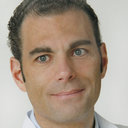Acute effects of sulfur mustard injury--Munich experiences.
Ключові слова
Анотація
Sulfur mustard (SM) is a strong vesicant agent which has been used in several military conflicts. Large stockpiles still exist to the present day. SM is believed to be a major threat to civilian populations because of the persistent asymmetric threat by non-state actors, such as terrorist groups, its easy synthesis and handling and the risk of theft from stockpiles. Following an asymptomatic interval of several hours, acute SM exposure produces subepidermal skin blisters, respiratory tract damage, eye lesions and bone marrow depression. Iranian victims of SM exposure during the Iran-Iraq (1984-1988) war were treated at intensive care units of 3 Munich hospitals. All 12 patients were injured following aerial attacks with SM filled bombs, which exploded in a distance between 5 and 30m. All patients soon noted an offensive smell of garlic, addle eggs or oil roasted vegetables. No individual protective equipment was used. Eye itching and skin blistering started 2h after SM exposure. Some patients complained of nausea, dizziness and hoarseness. 4h after exposure, most patients started vomiting. Eye symptoms worsened and most patients suffered from temporary blindness due to blepharospasm and lid oedema. Additionally, pulmonary symptoms such as productive cough occurred. Patients were transferred to Munich 4-17 days after SM exposure. On admission all patients showed significant skin blistering and pigmentation. Conjunctivitis and photophobia were the major eye symptoms. Pulmonary symptoms, including productive cough were persistent. Bronchoscopy revealed massive inflammation of the trachea with signs of necrosis. 3 patients needed tracheotomy. Chest X-ray did not yield abnormal observations. This presentation summarizes the experience of treating SM victims in Munich and discusses therapeutic implications.


